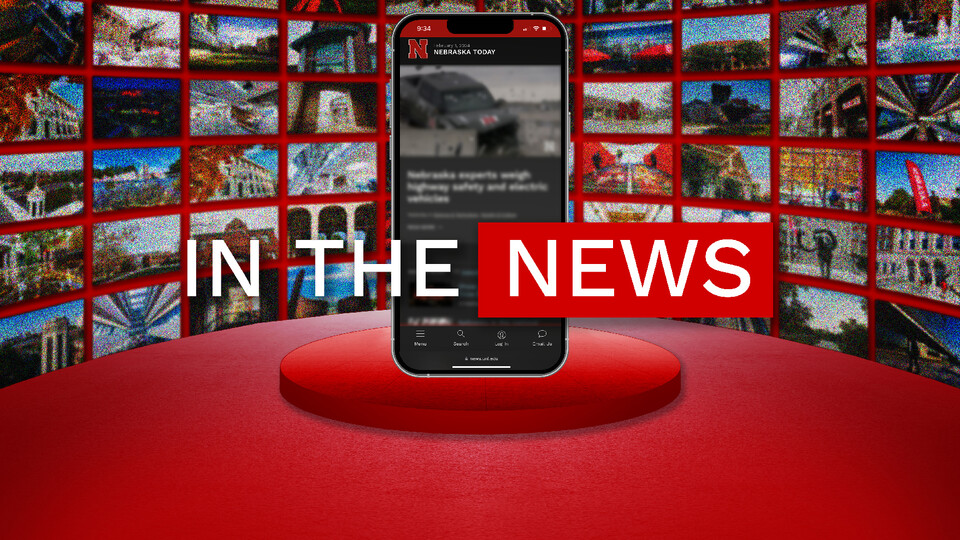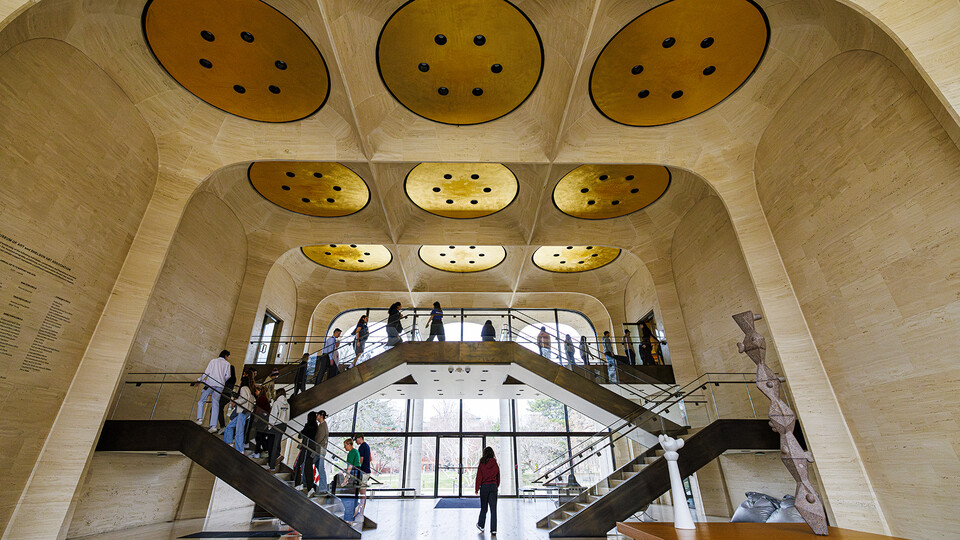
A study showing that humans and their ancestors are responsible for an unprecedented wave of large-mammal extinctions was featured in numerous publications in April. Kate Lyons, biological sciences, co-authored the study, which originally appeared in the journal Science. She was quoted in stories in USA Today, NBC News, the New York Post, the Independent, Inquisitr and Futurity, among dozens of other outlets. The study also noted that, should the "downsizing" trend continue at its current pace, a domestic cow may be the largest mammal in 200 years.
Inventors, innovators and trailblazers
- The university launched its Canine Cognition and Human Interaction Lab Aug. 11 with the inaugural Husker DogFest. The lab is a research program created by Jeffrey Stevens, psychology. Its research focuses on understanding both dog psychology and how interacting with dogs influences human behavior and psychology. Stories on the lab appeared in more than a dozen Nebraska media outlets, including the Lincoln Journal Star and Omaha World-Herald, and more than 20 others nationwide, including BTN.com.
- A research team led by Donald Umstadter, physics, confirmed a theory that plasma electrons within the path of intense laser-light pulses are almost instantly accelerated to nearly the speed of light. Stories on the team’s experiment appeared in Evaluation Engineering, Research and Development, Science Daily, Universe Today and several other media outlets in September.
- Adam Houston, Earth and atmospheric sciences, is leading an ambitious new study to use drones to track tornadoes in the Great Plains. The goal is to better understand the causes of tornadoes. Articles on the research appeared in the Grand Island Independent, Lincoln Journal Star, Norfolk Daily News, Omaha World-Herald, Scottsbluff Star-Herald, Drone Belowand Unmanned Aerial Online in October.
- The Extreme Light Laboratory, part of the Department of Physics and Astronomy, is one of the founding members of LaserNetUS — a new research network intended to unite the nation's most powerful laser facilities. Stories on the network appeared on Bioengineer.org, Phys.org, Tech Site and Technology Today in October.
- A University of Nebraska–Lincoln team of engineers and drillers is using a Husker-developed hot-water drill to tap into Subglacial Lake Mercer, about 500 miles from the South Pole. The team is part of the United States-led, multi-institutional Subglacial Antarctic Lakes Scientific Access (SALSA) project, which is exploring how microbial life thrives in one of the most extreme environments on the planet. The Lincoln Journal Star and Nature published articles on the project in December.
- A research team led by Eric Weaver, biological sciences, may have identified a safer vaccine that would defend against Zika virus without producing antibodies. The team also includes doctoral students Brianna Bullard and Brigette Corder. Stories on the research appeared on India.com, India Today, Infection Control Today, Medibulletin, Science Daily and several other websites in December.
Trusted experts and recognized authorities
- Paul Blum, biological sciences, January in Fast Company and April in The Guardian, his startup company Neurocarrus’ alternative to opioids.
- Kelsy Burke, sociology, April in The Conversation, Christian right opposing pornography but supporting President Trump; December in The Huffington Post, conservative evangelical sex message boards.
- Kelsy Burke and Emily Kazyak, sociology and women’s and gender studies, February in The Conversation, Nebraskans’ opinions of “religious freedom” laws.
- Wheeler Winston Dixon, film studies, March in Toronto Star, comparing “The Wiz” to “Black Panther”; November in Los Angeles Times, discontinuation of classic-movie streaming service FilmStruck.
- Richard Edwards, Center for Great Plains Studies, July in The Washington Post, saving black homesteading sites.
- John Hibbing, political science, October on NPR’s Hidden Brain podcast, psychological and neurological differences between conservatives and liberals.
- Ari Kohen, political science, September on PBS’ “The Great American Read,” heroism.
- Chigozie Obioma, English, July in The Guardian, comparing mental health in United States, Nigeria; December in The New York Times, origins of his love of books.
- Kenneth Price, English, October in The New York Times, Walt Whitman’s Civil War reporting.
- Marilyne Stains, chemistry, April in Futurity and Inside Higher Ed, traditional lecturing versus more student-centered approaches.
Additionally
Forensic anthropologist Emily Hammerl was part of the archaeological dig at the site of the ancient Roman city of Antiochia ad Cragum in southern Turkey. The team recently uncovered a rare, 2nd-century figural mosaic poking bathroom-style fun at the Greek myths of Narcissus and Ganymede on the floor of a public latrine there. Stories on the discovery appeared in KOLN/KGIN, Atlas Obscura, IFL Science, Live Science, Smithsonian.com and several other media outlets in November. Michael Hoff (art history in the Hixson-Lied College of Fine and Performing Arts) led the team.
Taken from National spotlight shined on Nebraska in 2018 from Nebraska Today.


